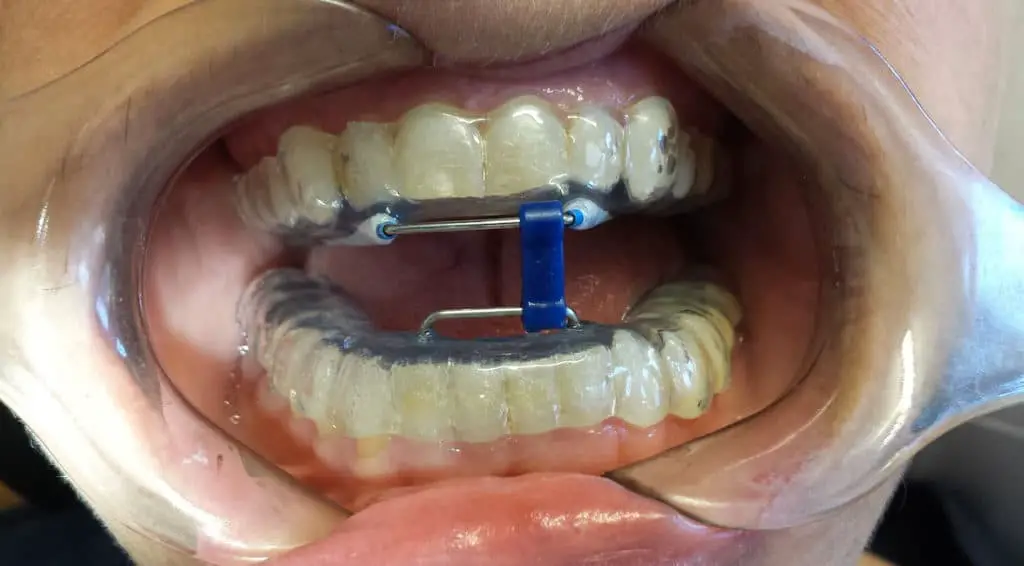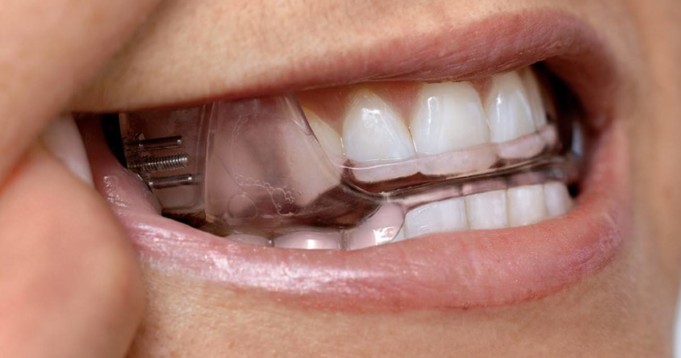A mandibular advancement device (MAD) is a treatment for snoring and sleep apnea. It is also often called a mandibular repositioning device (MRD).
According to the American Sleep Apnea Association, millions of individuals snore while sleeping in the United States. Snoring is not only an audible disturbance but can also disrupt the sleep of a person and decrease its overall efficiency.
Kindly read further to know more about the mandibular advancement device.
What is sleep apnea?
Around 22 million people in the US have obstructive sleep apnea. As the human body relaxes, the throat does as well. This relaxation contributes to a shrinking of the airway that while breathing, creates noticeable snoring sounds.
Sleep apnea is a medical condition that occurs when breathing is obstructed by the throat walls closing completely. Most people do not recognize that they have sleep apnea. Aside from snoring, common symptoms include:
- Feeling extraordinarily tired throughout the day
- Waking up unexpectedly in the evening
- Focus and memory issues
- Breathing pauses when sleeping, which a partner would generally note
- Mid-morning headaches
Individuals who believe that they may have this condition may want a sleep study to be considered, which may confirm the existence of sleep apnea. A sleep specialist will recommend potential therapeutic options upon diagnosis.
Sleep apnea remedies include:
- Changes in lifestyles, such as shifting sleep positions, weight loss, and treatments for allergies
- Surgery
- Appliance with Continuous positive airway pressure (CPAP)
- Oral appliances such as MAD
The most widespread treatment for sleep apnea is CPAP.
How do MAD works?
A MAD is an alternative form of treatment which can be tried by people. It operates by moving the jaw and Tongue forward momentarily, which eliminates constriction of the throat and avoids sleep apnea and snoring. Moving the Tongue forward raises space in the airway.
Some MADs are personalized or semi-custom and match the mouth of a particular person. Others known as boil-and-bite MADs (OTC) are available over the counter. They include soft materials that underexposure to hot water can become more pliable. It helps fit the device by biting down on the flexible mould.
The authors of a 2018 analysis explain that to assess the efficacy of each form of MAD, further research is required. It is important to remember that MADs are not appropriate for people who wear dentures or have serious dental problems.
Advantages
The primary advantage of an MA device is that it helps decrease snoring and sleep apnea. A 2000 research on the use of MADs by 22 people over 12 – 30 months indicates that these devices are effective for sleep apnea and snoring care.
Many of the study participants wanted the use of MADs to continue. Nevertheless, the sample size was very small.
Individuals expected to benefit most from MADs include:
- Those suffering from mild to severe sleep apnea
- Youthful people
- People with sleep apnea, which increases when they sleep on their side
- Females
- Those with the structure of a receding jaw (also known as a retrognathic mandible)
Symptom progress with MADs is less likely to be seen by the following individuals:
- Older grown-ups
- Obesity patients and those with too much fat tissue around the neck
- Those with a stiff jaw, making it hard to progress
- Individuals with dental problems, including gum disease,
- People with central sleep apnea, which is not mechanical, but a neurological disorder
Types of Mandibular advancement devices
There are three types of MAD, which include:
- Boil and bite MADs: These can be purchased online and from pharmacies. The fit is attained by loosening the resin or silicone with hot water, then sticking it in the mouth and clamping it down to get a good fit after it has been cooled slightly. A few of these devices are now capable of adapting to the user.
- Semi-custom devices: These involve the consumer to take a custom mould of their teeth. The mould is then sent away to be specially designed. It could be sent back to be patched if a device does not fit properly.
- Custom dental MADs: These devices are based on the referral of physicians and customized by dentists or sleep experts. They give a great match and the potential of experts to be refined.
Risks and adverse reactions

Although MAD can help minimize the symptoms of sleep apnea and snoring, there are a few adverse effects. This may include:
- Discomfort around the jaw and area of the mouth
- Tooth pain
- Over excessive drooling
- Dry mouth
- Irritated gum
Typically, the adverse effects of using mandibular advancement devices are insignificant. However, they will often lead individuals to renounce MAD treatment.
MAD vs CPAP
Although the gold standard for sleep apnea care is CPAP, people can not always stay consistent with the treatment. Eventually, about 50 per cent of people who use CPAP therapy for sleep apnea quit treatment.
An analysis in the Journal of Thoracic Disease shows that for individuals who have moderate sleep apnea or struggle with CPAP treatment, MADs are beneficial.
CPAP is more effective overall for the treatment of sleep apnea than MADs. Yet, people are more likely to use MADs more readily, and this treatment is more economically viable than CPAP.
In comparison with CPAP, MADs are durable, take up almost no physical space in the bedroom, and do not generate noise. They also do not require electric power. Nonetheless, they are not effective for everyone.
The American Thoracic Society explain that MADs are useful for improving symptoms, but they aren’t used for full-time regulation of sleep apnea. They note that CPAP is more likely to provide instant relief from sleep apnea symptoms.
Other options
Besides CPAP and MADs, treatment options for sleep apnea include:
- Surgery: Surgery for sleep apnea normally requires removing any extra tissue from the back of the throat in order to minimize the obstruction of the airway
- Weight loss: This long-term method can relieve symptoms of sleep apnea by lowering fatty tissue around the neck
- Giving up smoking and restricting alcohol intake: The risk of airway blockage can be reduced over time by doing both
- Allergy medicines: Nasal decongestants and other OTC allergy medicines can increase airflow and help people sleep while breathing through their nose
- Modifying sleep position: Individuals can try to change their sleeping position and relax on their side in order to see if symptoms improve. Those with the condition are more likely to show signs when sleeping on your back
Mandibular advancement devices are an effective tool for the treatment of snoring and obstructive sleep apnea. They have minimal, easy-to-use adverse effects, and are more cost-effective than CPAP.
Nonetheless, MADs do not work for everyone. There may be no relief from using these types of devices in people with extreme sleep apnea or central sleep apnea.
People who are concerned that they might have sleep apnea should visit your doctor or see a sleep specialist. A sleep examination can confirm a diagnosis of sleep apnea. Then care options should be given by a specialist.
Frequently Asked Questions
Can a MAD Be Used With Dentures?
No, it’s not. Most mandibular advancement devices are fastened and will not extend the jaw unless fastener fits your teeth. Denture users should consider a Tongue Stabilizing System or TSD.
Which of the following is better, a Mandibular advancement device or a Tongue stabilizing device?
The use of MAD, TSD, or other anti-snoring system is a matter of trial and error. We advise that you contact your doctor for guidance on the right option for you. At the same time, other sleep disorder conditions such as sleep apnea may be tested by your healthcare professional or expert.
How much does a MAD cost?
Price varies from $39- $2000 for MADs. The majority of devices that are off-the-shelf range from $75 – $150. The most costly, ranging from $1500 – $2000, are custom units.
How long does a MAD last?
Generally, the rate of use and daily cleaning will influence how long it will last for a mandibular advancement device. Nonetheless, you can assume a minimum of six months and an operational lifespan of up to two years. Usually, every year you renew your off-the-shelf MAD and every three years you renew your custom MADs.
Do MADs cover health insurance?
The majority of medical insurance providers provide plans that offer medical sleep device coverage. However, whether you will be covered will rely on the sort of policy and scope of coverage. For an updated opinion on the implementation of MADs, please consult your health insurance provider.
Can MADs be adjusted?
The more conventional and contemporary pharmacy or online-sourced solutions may include a simple adjustment. The very best mandibular advancement devices offer an Increment of 1.0mm or 1/16 of an inch. Custom fitted MADs include options for micro-adjustment as well.
Are MADs uncomfortable to wear?
Generally not. There might be some discomfort from having the device in your mouth, but it would be extremely unusual to experience pain. You should stop wearing the device if you are experiencing pain in any way. With the jaw being held forward with a MAD, it can take a week or so to get entirely comfortable.
How do I keep my MAD clean?
Any build-up of bacteria or germs should be minimized by placing your MAD in hot water. Regular toothpaste brushing or soaking in mouthwash will also keep your mandibular advancement device clean.
Do I need to get a professionally fitted MAD?
Fitting varies with the customization feature. Usually, an off-the-shelf MAD or one that is purchased online is a reasonably simple system. Place the system in hot water, let it cool down, put the MAD and the silicone mould in your mouth.
Most MADs offer gradual changes once they are attached to your mouth. Professional sleep physicians or dentists typically fit custom MADs and have a comfortable fit that can also be modified gradually.
What if snoring persists?
Unfortunately, there is no certainty that mandibular advancement devices will solve your snoring problem. MADs may not work for everyone, especially if the snoring is in conjunction with other health problems, but for most users, they do provide improvements.
Correct fitting is crucial as it ensures that the appliance is not damaged or worn out. A change or increase in the consumption of weight and alcohol can also have an influence on your snoring.
It’s best to reevaluate rising to the next level of anti-snoring suggestions if your MAD does not help you stop snoring. There are a few of them here.
- TSD’s – Tongue stabilizing device
- Dental care appliances
- Positive airway pressure – CPAP Machines
- Bidirectional Positive Airway Pressure – BiPAP Machines
Reference;
- Mandibular advancement devices–MedicalNewsToday












